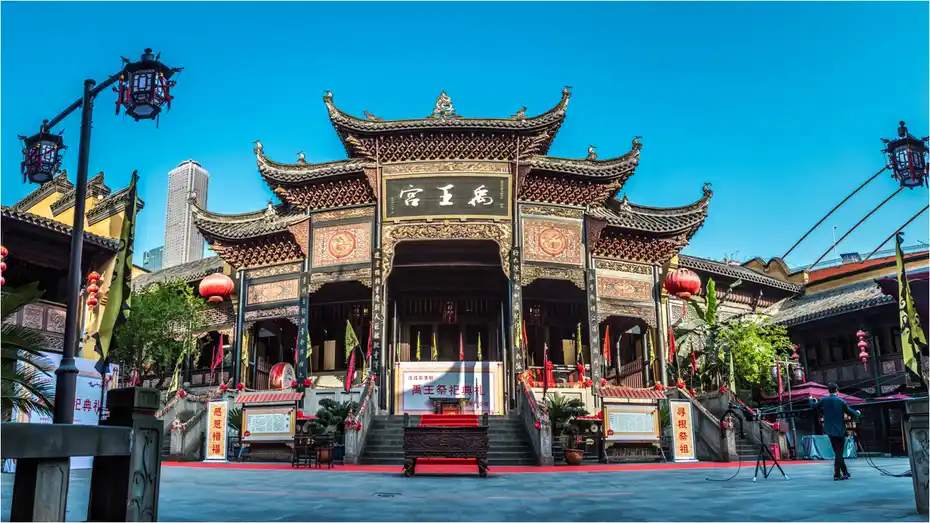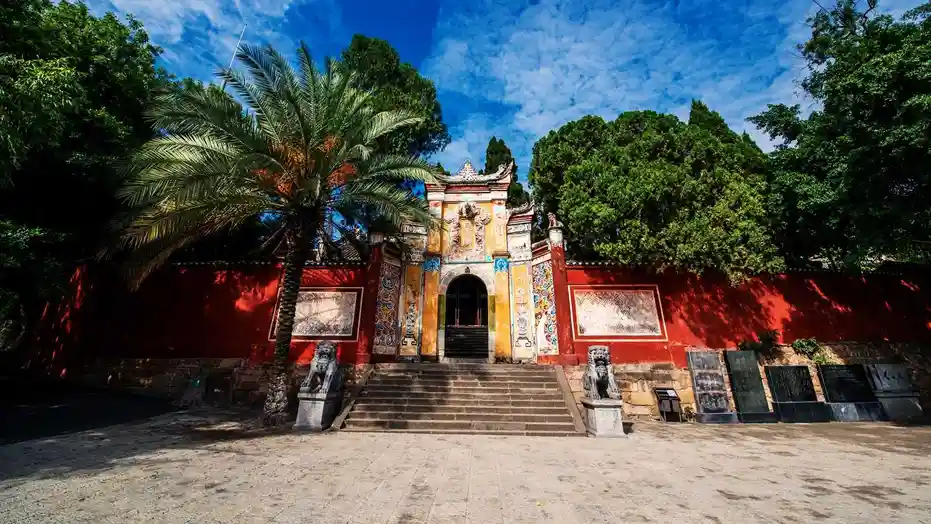Introduction
Chongqing Huguang Guild Hall stands as a cultural gem in Southwest China.
It reflects centuries of migration, trade, and architectural brilliance.
Built during the Qing Dynasty, this historic site blends art, history, and community.
Today, it remains one of Chongqing’s most visited heritage landmarks.
This guide explores its rich past and unique design.
You’ll learn about its founding, cultural role, and architectural highlights.
We’ll also examine preservation efforts and visitor insights.
Whether you’re a history lover or a curious traveler, this deep dive offers value.
Understanding Chongqing Huguang Guild Hall enriches your appreciation of Chinese heritage.
The Origins of the Huguang Guild Hall
In the 18th century, waves of migrants arrived in Chongqing from Hubei and Hunan.
These settlers, known as “Huguang” people, formed tight-knit trade communities.
To support mutual aid and commerce, they established guild halls across southern China.
The Chongqing branch was completed in 1711.
It served as a meeting place for merchants, officials, and travelers.
Members used it for business negotiations, dispute resolution, and festivals.
Over time, it became a symbol of regional pride and unity.
The hall’s founding reflects broader patterns of internal migration.
The “Huguang Fills Sichuan” movement reshaped demographics in the region.
This historical context helps explain the hall’s cultural significance today.
Chongqing Huguang Guild Hall: A Cultural Hub
Beyond trade, the guild hall played a vital social role.
It hosted weddings, funerals, and ancestral rituals for Huguang families.
Scholars gathered here for lectures and poetry recitals.
Temples within the complex honored deities like Guan Yu, the god of loyalty.
Festivals brought music, opera, and dragon dances to the courtyard.
These events strengthened community bonds across generations.
Even today, local performances keep traditions alive.
The site functioned as more than a business center.
It was a sanctuary for identity and cultural preservation.
For Huguang descendants, Chongqing Huguang Guild Hall remains a spiritual anchor.
Architectural Style and Design Principles
The building follows traditional Southern Chinese courtyard architecture.
Wooden structures surround open spaces, promoting airflow and light.
Rooflines feature sweeping curves, a hallmark of Ming and Qing design.
Craftsmen used intricate woodcarving, stone engraving, and painted beams.
Dragon motifs, phoenixes, and floral patterns cover pillars and eaves.
These symbols represent prosperity, protection, and harmony.
The layout follows feng shui principles.
Main halls face south, aligned with geomantic ideals.
Courtyards act as energy conduits, balancing yin and yang.
This architectural philosophy blends aesthetics with function.
Every detail serves both symbolic and practical purposes.
Key Structural Components
The complex consists of several interconnected buildings.
Each serves a distinct function, contributing to the whole.
Below is a breakdown of major sections:
- Front Gate: Ornate entrance with guardian lions and calligraphy.
- Opera Stage: Open-air theater for performances during festivals.
- Main Hall: Dedicated to worship and formal gatherings.
- Side Chambers: Lodging for travelers and meeting rooms.
- Back Courtyard: Quiet space for reflection and private events.
The opera stage is especially notable.
It’s one of the best-preserved examples in Southwest China.
Carved beams depict mythological scenes with stunning detail.
Acoustics were carefully considered—sound carries clearly across the courtyard.
Symbolism in Craftsmanship
Artisans embedded meaning into every decorative element.
Wood carvings aren’t merely ornamental—they tell stories.
Common themes include loyalty, filial piety, and scholarly success.
For example, depictions of the Eight Immortals suggest protection.
Lotus flowers symbolize purity amid hardship.
Bats (fu) represent good fortune due to phonetic similarity in Chinese.
Stone reliefs show historical battles and Confucian parables.
These visuals educated visitors on moral values.
Such craftsmanship turned the building into a living textbook.
Preservation and Restoration Efforts
By the late 20th century, the structure showed signs of decay.
Weather, pollution, and urban development took a toll.
In 1983, it was listed as a Municipal Cultural Relic Protection Unit.
Major restoration began in the 2000s.
Experts used traditional materials and techniques to maintain authenticity.
Damaged roof tiles were replaced with handmade clay versions.
Carpenters replicated missing carvings based on old photographs.
Today, the site is well-maintained and open to the public.
Ongoing monitoring ensures long-term stability.
Digital scans now preserve 3D models for future research.
Chongqing Huguang Guild Hall in Modern Tourism
The hall attracts thousands of visitors annually.
Tourists come for history, architecture, and cultural experiences.
Guided tours explain the site’s significance in Mandarin and English.
Photography is encouraged, especially at sunrise and sunset.
The interplay of light and shadow enhances the visual drama.
Nearby cafes and souvenir shops extend the visitor experience.
It’s also a popular spot for traditional wedding photos.
Couples wear Hanfu and pose beside carved pillars.
This blend of old and new keeps the site socially relevant.
Visitor Tips and Practical Information
Plan your visit with these details in mind:
| Location | East Bank of Jialing River, Yuzhong District, Chongqing |
| Opening Hours | 9:00 AM – 5:30 PM (Closed Mondays) |
| Admission | Free (Donation-based guided tours available) |
| Best Time to Visit | Spring (March–May) or Autumn (September–November) |
| Accessibility | Partially accessible; uneven stone paths present challenges |
Wear comfortable shoes—there’s plenty to explore.
Arrive early to avoid crowds and capture clear photos.
Check local event calendars for festival dates.
Conclusion
Chongqing Huguang Guild Hall is more than an old building.
It’s a testament to migration, craftsmanship, and cultural endurance.
From its 18th-century origins to modern-day preservation, it tells a layered story.
Its architecture showcases Qing Dynasty artistry and philosophical depth.
Symbolic carvings, feng shui alignment, and communal spaces reveal intentional design.
As a tourist destination, it bridges past and present.
For travelers, historians, and architects, this site offers rich insights.
We recommend a thoughtful visit—take time to observe details and context.
Support preservation by respecting guidelines and sharing its story.
Looking ahead, digital documentation and sustainable tourism will be key.
Chongqing Huguang Guild Hall deserves global recognition.
With care, it will inspire for generations to come.



